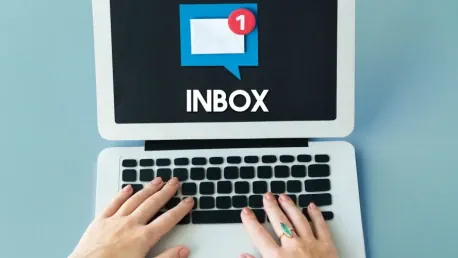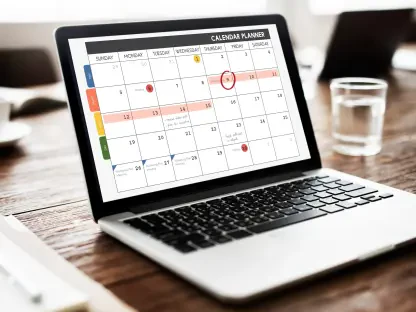It’s impossible to search the internet for a product or service without being constantly bombarded by ads. It can be overwhelming and intrusive, and yet, customers still prefer their user data being used to generate personalized marketing emails.
McKinsey reported that tailored offers and targeted messaging based on consumer preference (personalization) are still at the heart of effective marketing strategies. These methods can boost consumer satisfaction, and improve brand loyalty, engagement, and conversion rates.
Here are some insights into the power of personalization and how you can use similar strategies in your business.
Understanding Personalization
Personalization in today’s digital marketing climate goes far beyond adding a customer’s name in the introduction. Customers are looking for content and information customized to their needs, aligned with their buying history, and relevant to their searches.
Using subscriber data, marketing professionals are able to tailor their email content to provide a personal touch. This has increased open rates and drives revenue by up to 760%, as customers come to expect emails that are pertinent to their purchasing decisions.
To successfully implement personalization, marketing teams use audience segmentation and customer relationship management (CRM) tools. These tools allow them to analyze large amounts of user data to extract information about client behaviors, interests, and preferences. This will enable them to generate tailored emails that are relevant to each customer’s buying journey.
Strategies For Effective Personalization
A strategy aligned with your organizational objectives needs to be established to produce a well-executed personalized email marketing campaign. Here are a few things to consider to improve your campaign’s success rate:
Collect and analyze customer data.
Launching a highly personalized email marketing campaign requires a solid foundation of good client data—data from across your various touchpoints, like your website visits, purchase history, email, and social media exchanges. A CRM or data analytics tool can help you extract pertinent information to tailor your email marketing content to specific audiences.
This is not only an excellent way to keep customers engaged but can help you move them down the sales funnel. If you know, for example, that a customer has an abandoned cart, you can remind them to check out and provide a limited-time offer or discount to motivate them to finalize the sale.
Segment your audience.
Audience segmentation is key to personalizing your email marketing campaigns. It allows you to group customers with similar profiles together, including similarities in demographics, purchase history, and browsing patterns. Audience segmentation is a powerful tool for generating targeted email campaigns.
Let’s assume you operate a dentistry practice. You can use your CRM tools to find customers due for their six-month general checkup or isolate all customers with children under twelve years old. This information and customer data are vital for producing effective personalized emails.
Implement personalized content.
Continuing with our example, we now know that we have two groups of customers we can target for our hypothetical dentistry clinic: customers due for a six-month checkup and customers with children 12 and under.
These two groups can now be targeted for specific, personalized email campaigns. Instead of sending generic emails to the void, a good marketing team can start crafting a captivating, relevant email that holds your customer’s attention from the headline to the call to action (CTA).
The difference between a personalized email and a generic email is between an immediately discarded content piece and one that converts to a sale. With creativity, flair, and a personal touch, your emails can secure bookings, conclude sales, and encourage sales or cross-sales.
Leverage marketing automation.
Automation effectively distributes personalized emails and can add a tailored element to a customer’s digital journey through the sales funnel. The timing of these emails is a critical factor, and this is where leveraging technology is most effective.
Going back to our example of the dentist clinic, you could schedule a “thank you for trusting us, please rate our service” email to go out to a patient half an hour after a checkup. If you have an online booking system, you can schedule reminders to go out to patients a few days in advance. And with birthdates and other information, courtesy emails can be sent out to wish patients a happy birthday.
Automation in email marketing is a critical tool to keep customers engaged through personalized email marketing campaigns.
Test and optimize.
Refining your email marketing strategy is vital to remaining relevant and keeping those open rates high. Digital marketers are well aware that even with heaps of client data, the effectiveness of a particular campaign can only be measured through action, not just prediction. Continuous testing is necessary to iterate and optimize campaigns.
A number of factors contribute to a campaign’s success, from the subject line to the graphics, CTAs, and email length. What works for a particular customer segment may not work well with another.
For example, a single young adult might want a short, sharp reminder that they’re due for a checkup with a call-to-action to book an appointment. A personalized email for a patient in this demographic might read:
Hey Lana, it’s that time of the year again! You’re due for your next dental checkup soon. Click the link below to schedule your appointment via our calendly app. Just because you’re a loyal customer, we’ll throw in a 15% discount on your next appointment, Don’t delay; avoid tooth decay! Best wishes, The Online Dentistry Team |
It’s quick and easy to read and speaks to the fast-paced lifestyle of a single, young professional.
For a first-time parent, however, booking a dentist for a little one might require a more lengthy, information-dense email, with CTAs linked to more resources and advice. They might need something along the lines of:
Dear Georgina, We know that booking your child’s first dentist appointment can be fraught with anxiety for all, so we’ve put together a little guide on what to expect and how to prepare for the big day. First, rest assured that with The Online Dentistry Team, your child’s dental health is our first priority. Our excellent pediatric dental team has years of experience providing a comfortable and (dare we say it) fun consultation for kids. [[Consultation Do’s and Don’ts]] Watch this video to get a closer look at our Disney-themed consultation rooms and how we conduct our pediatric consults. We look forward to welcoming your family soon! Best wishes, The Online Dentistry Team |
Getting to this point of knowing what works with different audience segments is the result of rigorous and continuous testing.
Challenges And Considerations
Personalized email campaigns rely heavily on user data and information. This means that companies need to be cognizant of customers’ data privacy and need to handle this information responsibly. Data privacy compliance is important, and organizations must adhere to national regulations such as the European Union’s General Data Protection Regulation (GDPR).
To capture, store, and use this information, customers must consent. Here are some best practices for ensuring clients provide full consent for their data usage:
Explain your data usage policy in clear and straightforward language.
Provide regular updates on how data is used, any changes in your policy, and how this may affect clients.
Give customers greater control over how much data is shared through opt-in mechanisms.
Ensure that opting out is as easy as opting in.
Over-Personalization
One of the risks of personalized email marketing is over-personalization. Customers can feel overwhelmed and uneasy by being targeted too closely. Receiving an email soon after searching for a particular product or service is unnerving and sometimes can feel intrusive.
Digital marketing efforts need to prioritize trust and relevance and provide customers with as much agency over their data as possible. This could include choosing the form of communication used, the frequency of communication, and even the topics of relevance.
Conclusion
Incorporating personalization in your email marketing strategy is a powerful way to drive engagement and boost the success of your digital marketing. Customers are looking for content relevant to their own purchasing journeys and are quick to discard generic emails that clog up their inboxes.
Using CRM and data analytics tools, companies can segment their audiences along similarities like interests, behavior, demographics, etc., and use this to create tailored emails. With automation, personalization is taken to the next level, as businesses can use technology to move customers through the sales funnel, build loyalty, and enhance engagement.
With continuous testing and optimization, you can create highly personalized emails that engage the reader without overwhelming customers. In our data-driven reality, customized and relevant content is the currency to buy consumer loyalty, trust, and engagement.









